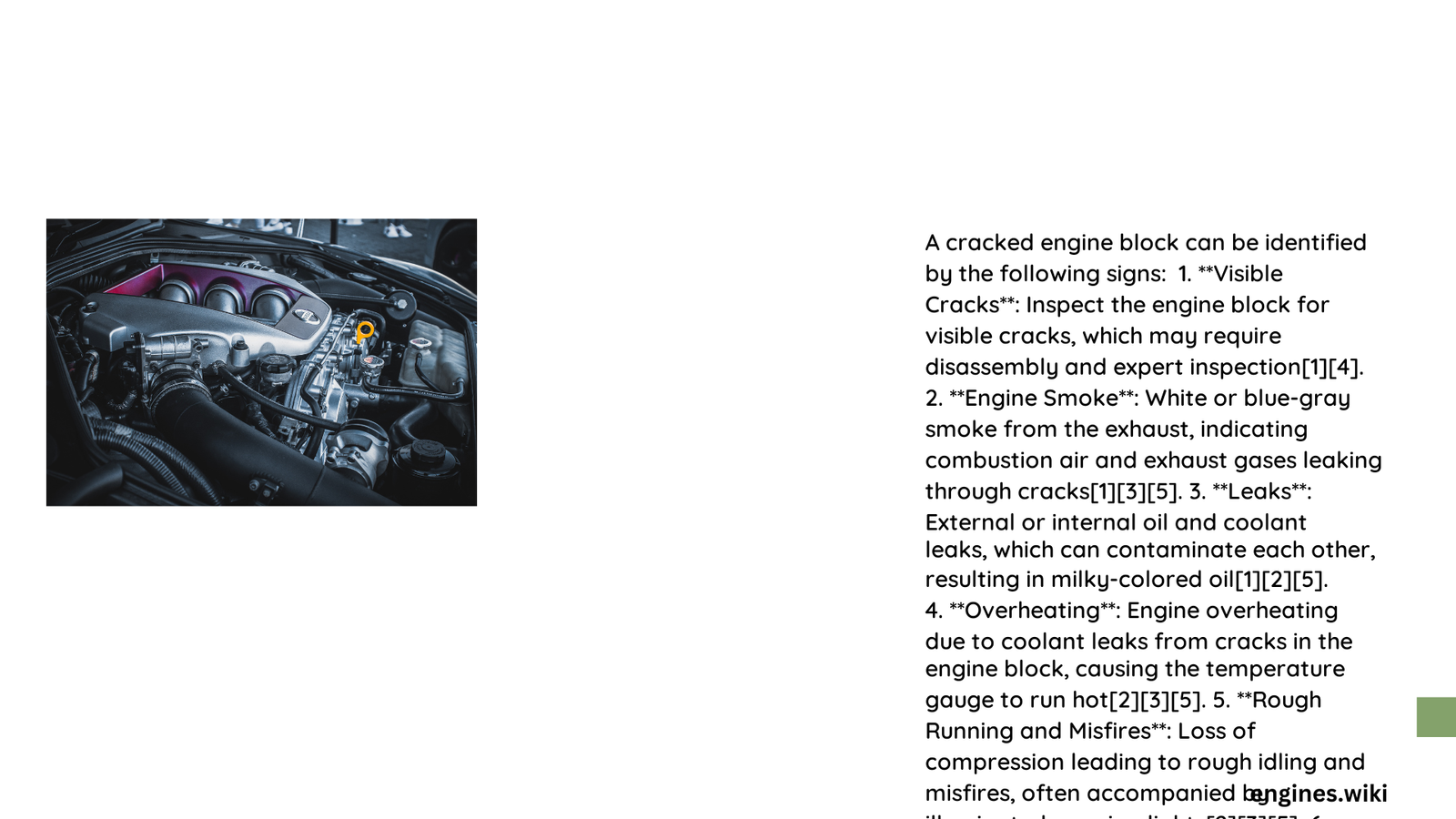A cracked engine block can transform your vehicle from a reliable mode of transportation into an expensive repair nightmare. When microscopic fractures develop in your engine’s core structure, they trigger a cascade of performance issues that range from subtle fluid leaks to dramatic engine failure. Understanding these warning signs can save you thousands in potential repair costs and prevent complete engine replacement.
What Are the Visual Signs of a Cracked Engine Block?
Can You See External Damage?
Sometimes, a cracked engine block reveals itself through visible indicators. Look for:
- Fluid Puddles: Unexpected oil or coolant pools underneath your vehicle
- Steam or White Smoke: Emerging from exhaust or around engine compartment
- Visible Surface Cracks: Detectable during thorough visual inspection
How Do Performance Changes Indicate Block Damage?
| Performance Indicator | Potential Severity |
|---|---|
| Reduced Acceleration | Moderate Risk |
| Rough Engine Idling | High Risk |
| Frequent Misfires | Critical Risk |
What Unusual Symptoms Should Trigger Immediate Concern?
Coolant and Oil Contamination
When your engine block cracks, it can cause catastrophic fluid intermixing. Watch for:
- Milky, frothy oil appearance
- Sudden coolant level drops
- Unusual color changes in engine fluids
What Diagnostic Steps Reveal Block Damage?

How Can Professionals Confirm a Crack?
Mechanics typically employ several sophisticated diagnostic techniques:
- Pressure Testing: Evaluating cooling system integrity
- Compression Diagnostics: Measuring cylinder pressure variations
- Combustion Gas Detection: Using specialized block testing equipment
What Are the Financial Implications?
| Diagnostic Stage | Estimated Cost Range |
|---|---|
| Initial Inspection | $100 – $300 |
| Comprehensive Diagnosis | $300 – $600 |
| Potential Repair/Replacement | $2,000 – $5,000+ |
What Causes Engine Block Cracks?
Why Do Blocks Develop Fractures?
Critical factors include:
- Extreme temperature fluctuations
- Manufacturing defects
- Chronic overheating
- Poor maintenance
- Age-related metal fatigue
How Quickly Can Damage Spread?
A small, undetected crack can rapidly compromise entire engine structural integrity. Microscopic fractures can expand exponentially under thermal stress, transforming a minor issue into a complete engine failure within weeks or months.
When Should You Seek Immediate Professional Help?
What Are Red Flag Scenarios?
Immediate professional intervention is crucial if you experience:
- Persistent white smoke from exhaust
- Sudden, dramatic coolant loss
- Check engine light activation
- Unexplained performance degradation
Technical Insights for Prevention
How Can You Protect Your Engine?
Proactive maintenance strategies include:
- Regular coolant system inspections
- Consistent oil changes
- Monitoring engine temperature
- Addressing overheating immediately
- Using high-quality coolant
Conclusion: Early Detection Saves Engines
Recognizing signs that your engine block is cracked requires vigilance, technical understanding, and prompt action. While some symptoms might seem minor, they can indicate severe underlying issues threatening your vehicle’s longevity.
Pro Tip: Never ignore persistent performance anomalies or unusual fluid behaviors. Your quick response could mean the difference between a minor repair and a complete engine replacement.
